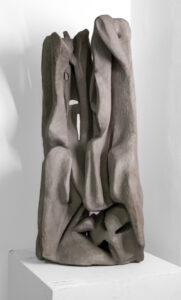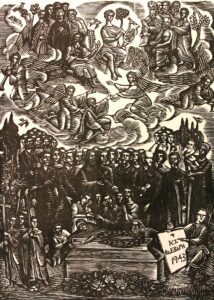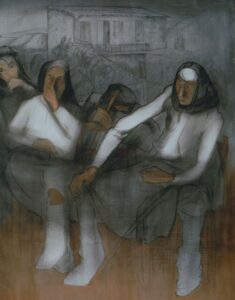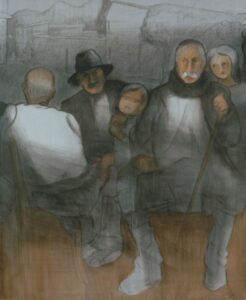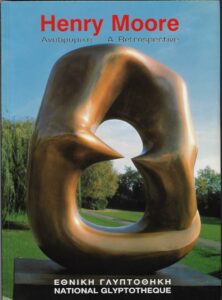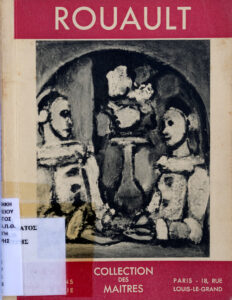1/1
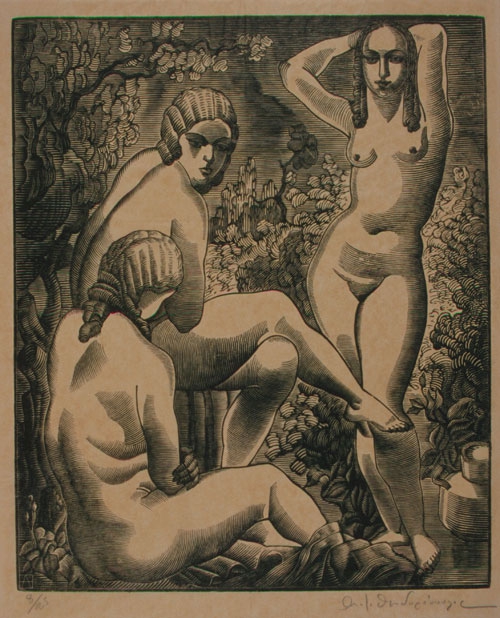
Dryads
Artist
Άγγελος Θεοδωρόπουλος (1883 - 1965)
Date
Technique
Dimensions
Object Number
Description
According to Greek mythology, the Dryads were forest nymphs and were immortal. Their name comes from Drys (oak). According to tradition, they were nymphs of the trees, especially oaks, under which they lived. The artist chooses to capture three naked Dryads in perspective in a verdant and idyllic landscape, apparently of oak trees. The figures are positioned as if Angelos Theodoropoulos wanted to render three views of the female body. The first on the left (toward the viewer) is placed on the first level, seated on the ground with her torso turned away from the viewer, who is looking at her back. Her head is bowed and her facial features are not discernible. The second is seated on an object that is not visible, with a slight inclination of the torso in a direction from right to left, while the legs are bent and crossed with the right (in the form) resting on the left. Her face is turned towards the viewer, whom she is looking at. The third figure is rendered standing with her right (to the viewer) leg bent, thus covering the left and with a slight tilt of her pelvis. Her hands are raised and bent behind her head, her gaze is directed towards the viewer, while a large pot is placed beside her. Regarding the position of the latter’s hands, the source of inspiration could be either “Dressed Maya” or “Nude Maya” by Goya. In addition, it could also be the middle female figure from Picasso’s iconic work “The Misses of Avignon”. However, stylistically we could say that it approaches the nudes of D. Galanis that he created from the mid-1920s to the early 1930s.
VIEW MORE
Ιωάννα Σπητέρη-Βεροπούλου (1920 - 2000) ; Μάκης Σκιαδαρέσης
305026
 Discover More
Discover More

